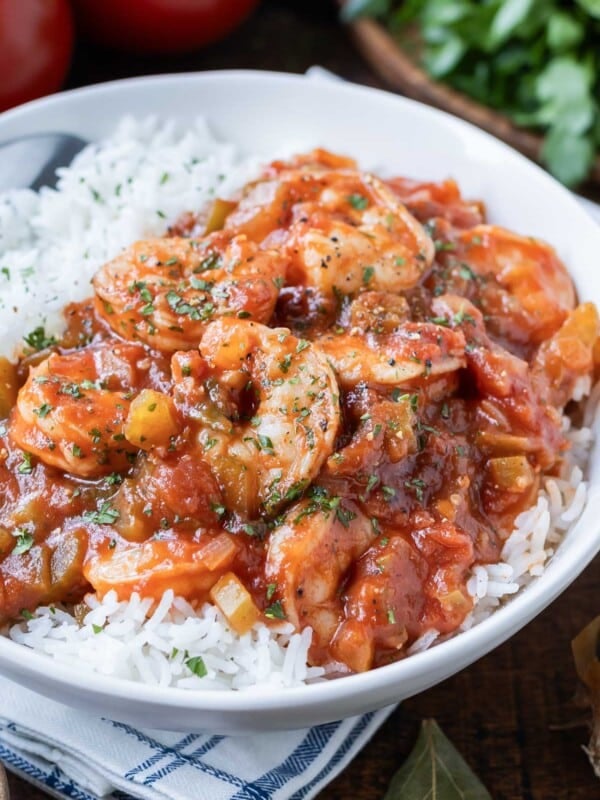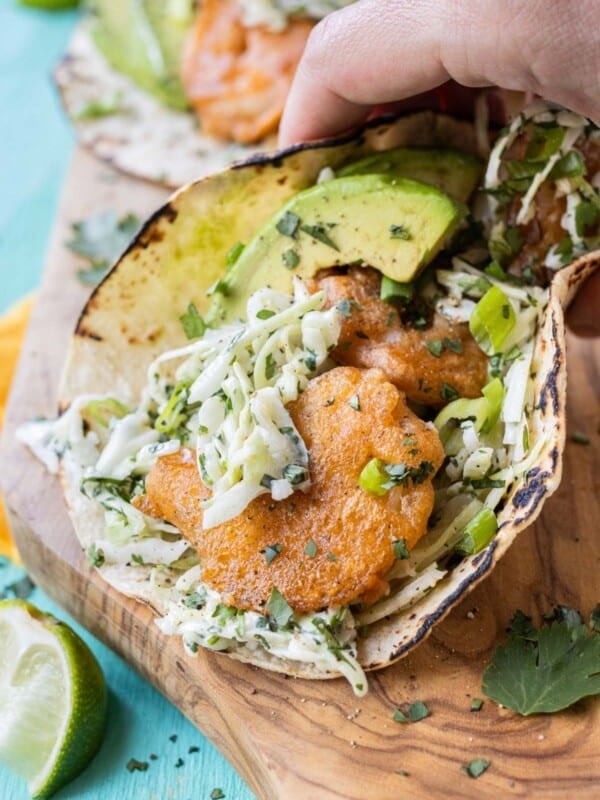Wondering how to keep apples from turning brown? Whether you use salt water or citrus juice, it’s all about preventing the oxidation process from occurring. Let’s dive into the why apples brown, the best way to keep them from turning, and how to use them in the tastiest recipes.
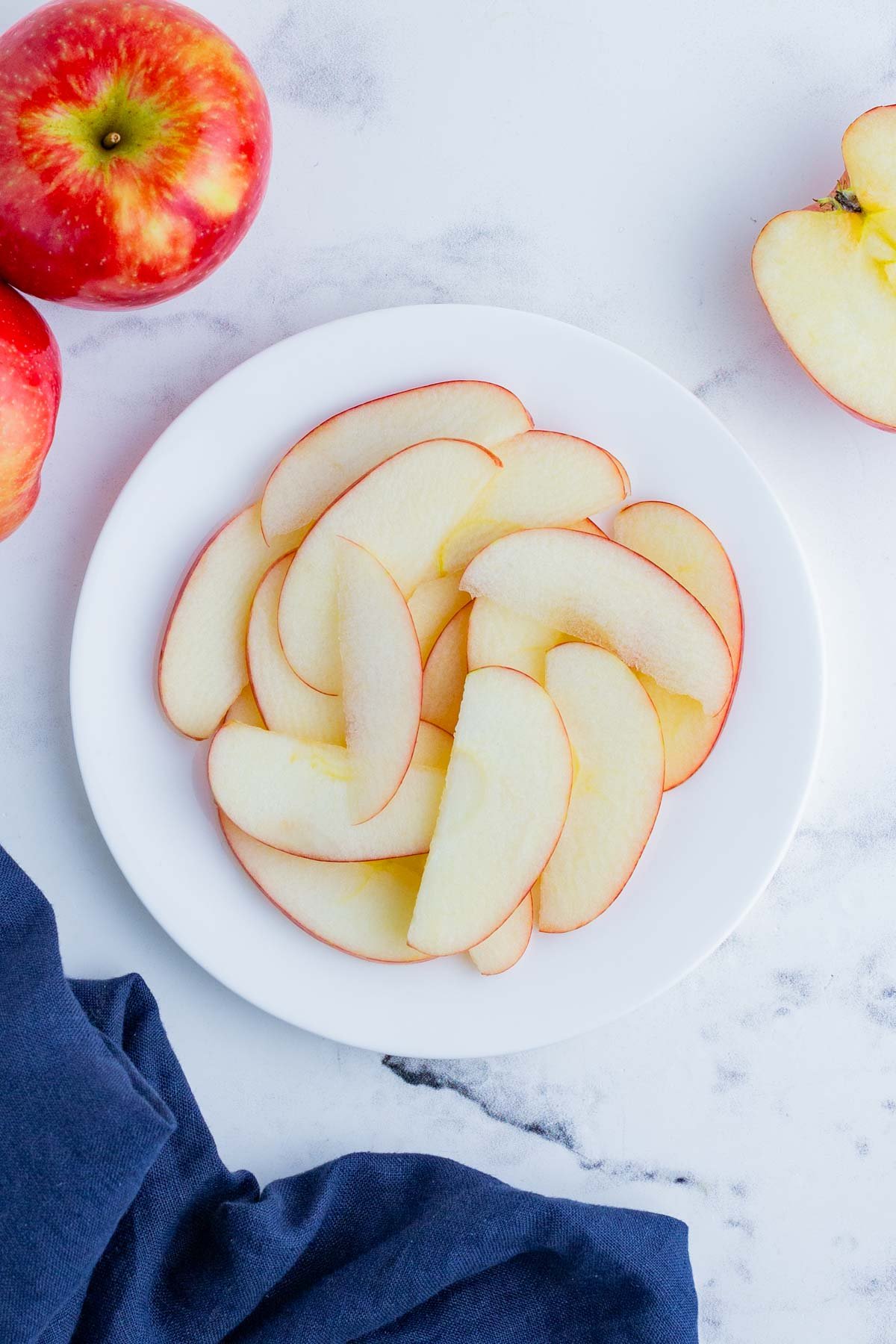
Why do apples turn brown?
When bitten into or sliced open, apples turn brown due to an enzyme called polyphenol oxidase being exposed to oxygen. When this happens, the enzyme has a chemical reaction with amino acids in the fruit known as enzymatic browning (or the oxidation process), producing brown melanins and a softer flesh. It is not harmful to continue to eat, but just know it’s not going to be as good of an apple.
No matter what type of apple you eat, all of them will brown once cut into (here’s the best way to cut an apple). Keep a couple of these methods in your back pocket if you want fresh apple slices ready at a moment’s notice!
7 Ways to Keep Apples from Turning Brown
Fresh apples have been people’s go-to snacks and gifts to your favorite teachers for years and years. It’s no wonder why—they are fresh, crunchy, and full of flavor. On top of that, they are full of antioxidants and vitamins that our bodies need on the daily. So how do you keep that crisp and bright texture once you’ve cut into one?
There are a few solutions to slow down the oxidation process. Here are 7 ways to prevent brown apples in school lunches, for a later use, or for a healthy snack after school.
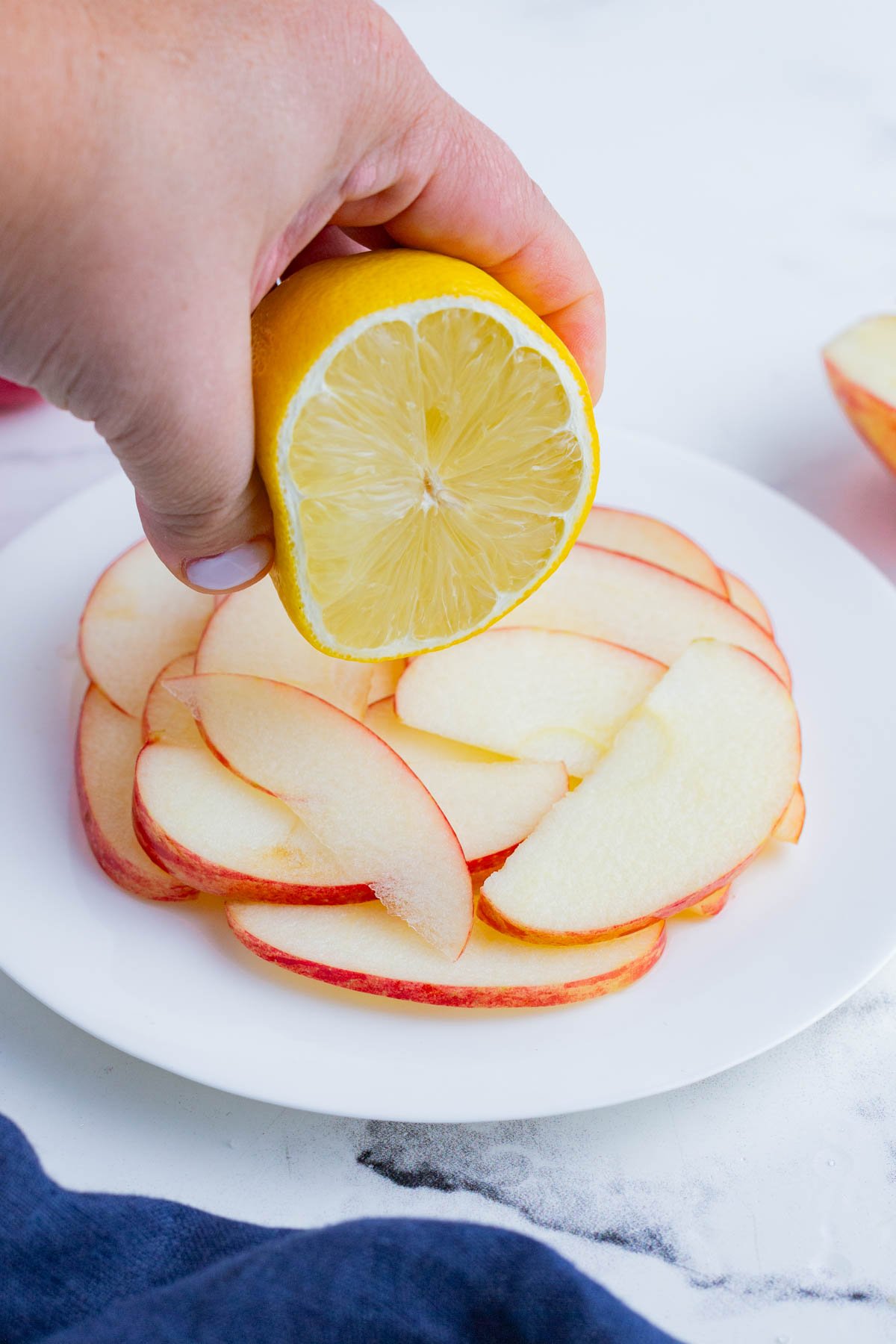
Lemon Juice
Citrus fruit packed with vitamin C like lemons, limes, and even oranges have high ascorbic acid levels that react with oxygen on the surface of cut apples first, instead of the enzyme that causes browning. To use this method:
- Combine one tablespoon of lemon juice (or citrus juice of choice) with one cup of cold water
- Soak the apples for 5 minutes OR Squeeze the lemon directly on the apple flesh
- Drain and eat.
While this method might not last for long, it does work during short periods of time. This method can also add a slight tang to your apple slices.
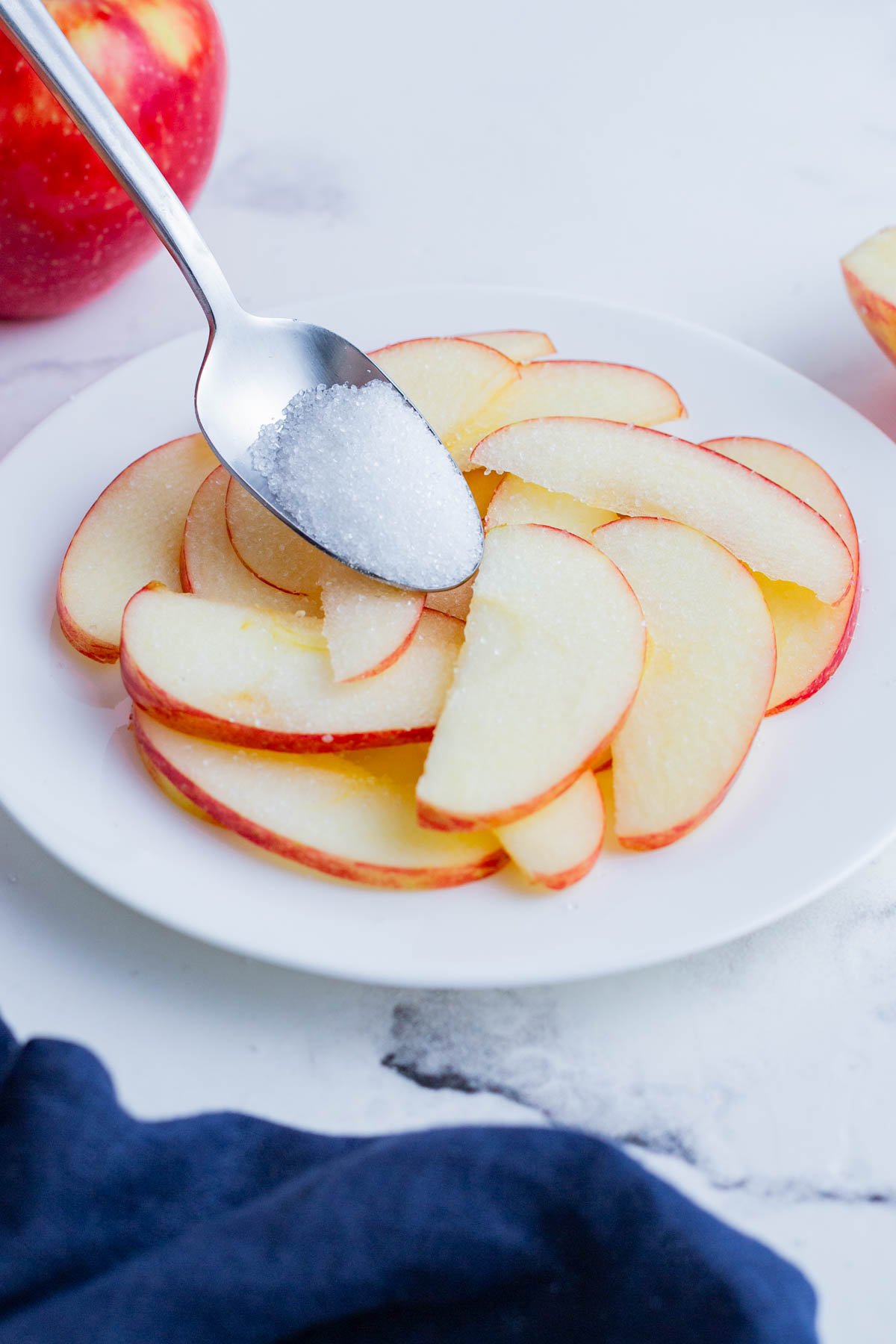
Salt Water
Soaking cut apples in salt water is one of the easiest ways to reduce that brown pigment. To create this saltwater solution the right way:
- Mix ½ teaspoon of kosher salt with one cup of water
- Soak apples for 10 minutes
- Drain and store sliced fruit in an airtight container or Ziploc bag.
This process acts as a natural preservative that slows down the brown-colored pigments for several hours. Give the cut fruit a quick rinse under tap water before eating them, and you won’t taste the salt water at all!
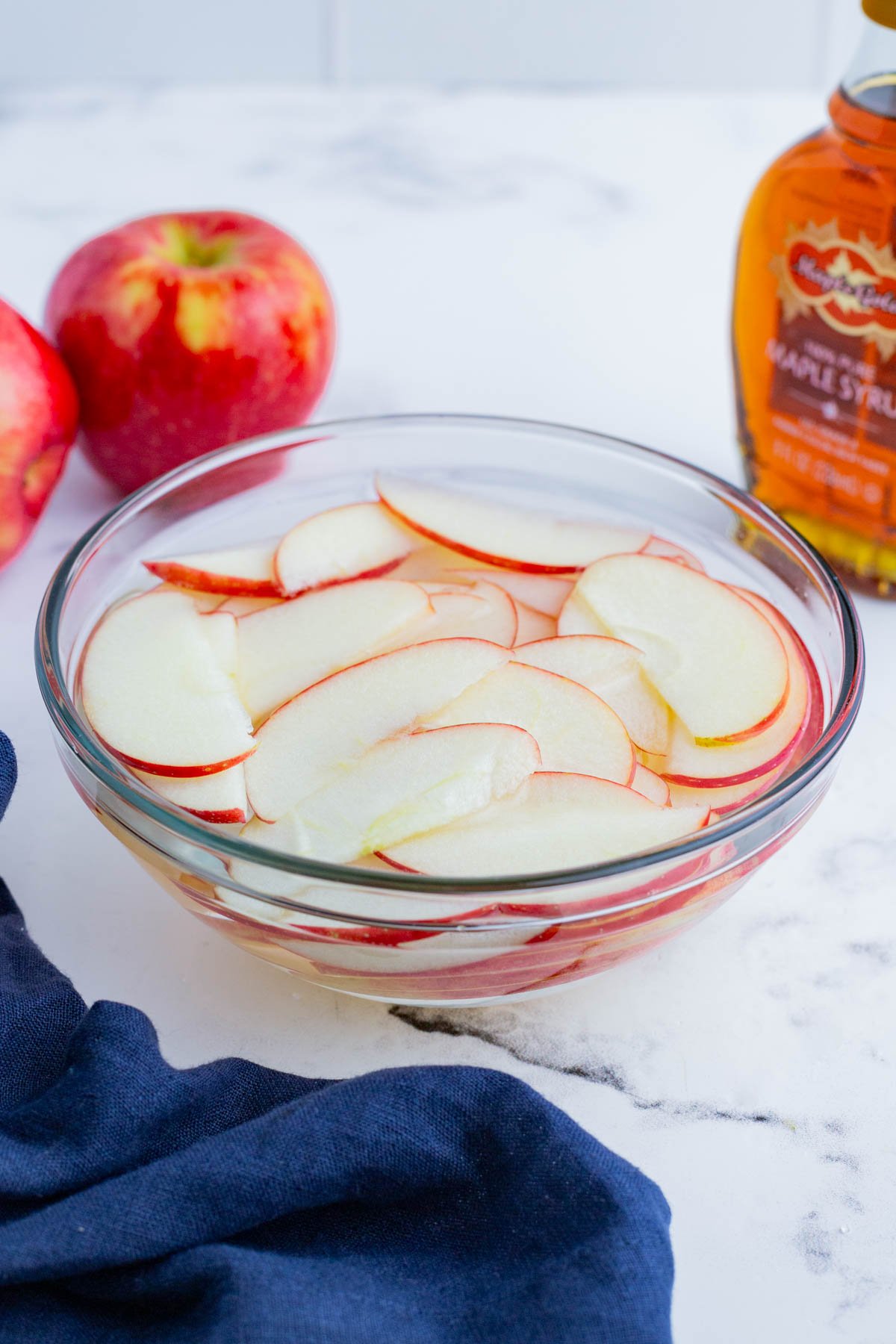
Maple Syrup or Honey Water
If you don’t want to impart a tangy flavor, there’s a slightly sweeter method. Soaking apples in water sweetened with honey or maple syrup can slow down the browning process as well! Here are the simple steps:
- Add 2 tablespoons of honey or maple syrup to one cup of cool, plain water
- Soak the apples for 5 minutes
- Rinse off before eating
These natural sweeteners contain a peptide compound that stops the activation of the amino acid, polyphenol oxidase. This, in turn, prevents the quick browning process in cut apples for several hours. This method works particularly well with apples that are more sour and tart (here’s all you need to know about the different types of apples).
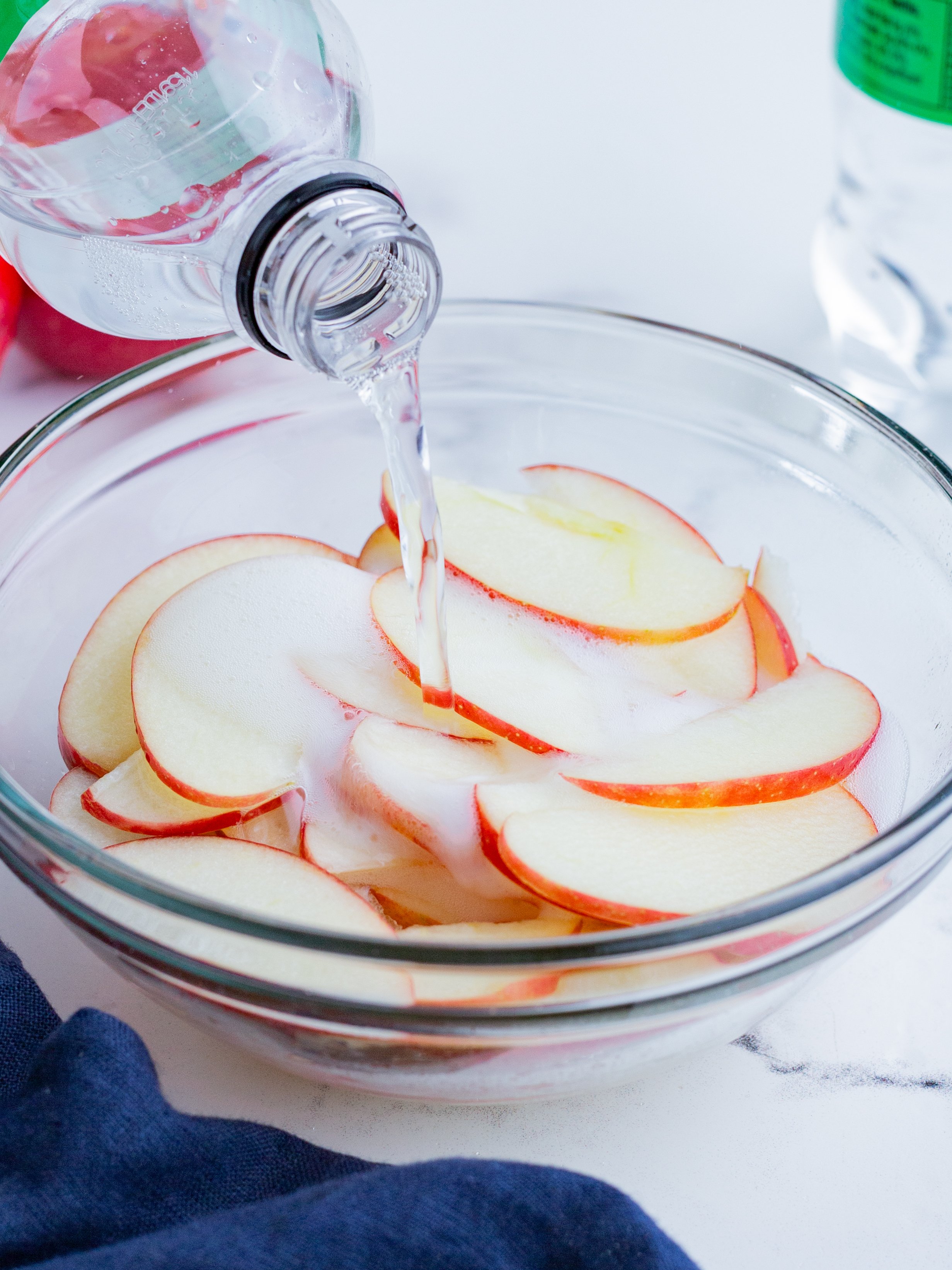
Citrus Soda (Lemon Lime Soda)
If you’re wanting to try a new method that’s a little more fun, rinsing apples in soda may help. Sodas like Sprite or 7UP are highly acidic. All that acid slows the oxidation process down. Try this method out:
- Soak apples in a cup or two of citrus soda for 5 minutes
- Rinse off and enjoy
This might be considered one of the easier methods, but it might not be the best option. Why? It’s not as effective as lemon juice, which contains higher concentrations of acid. Additionally, soaking a healthy, nutritious apple in sugar counteracts many of its health benefits.
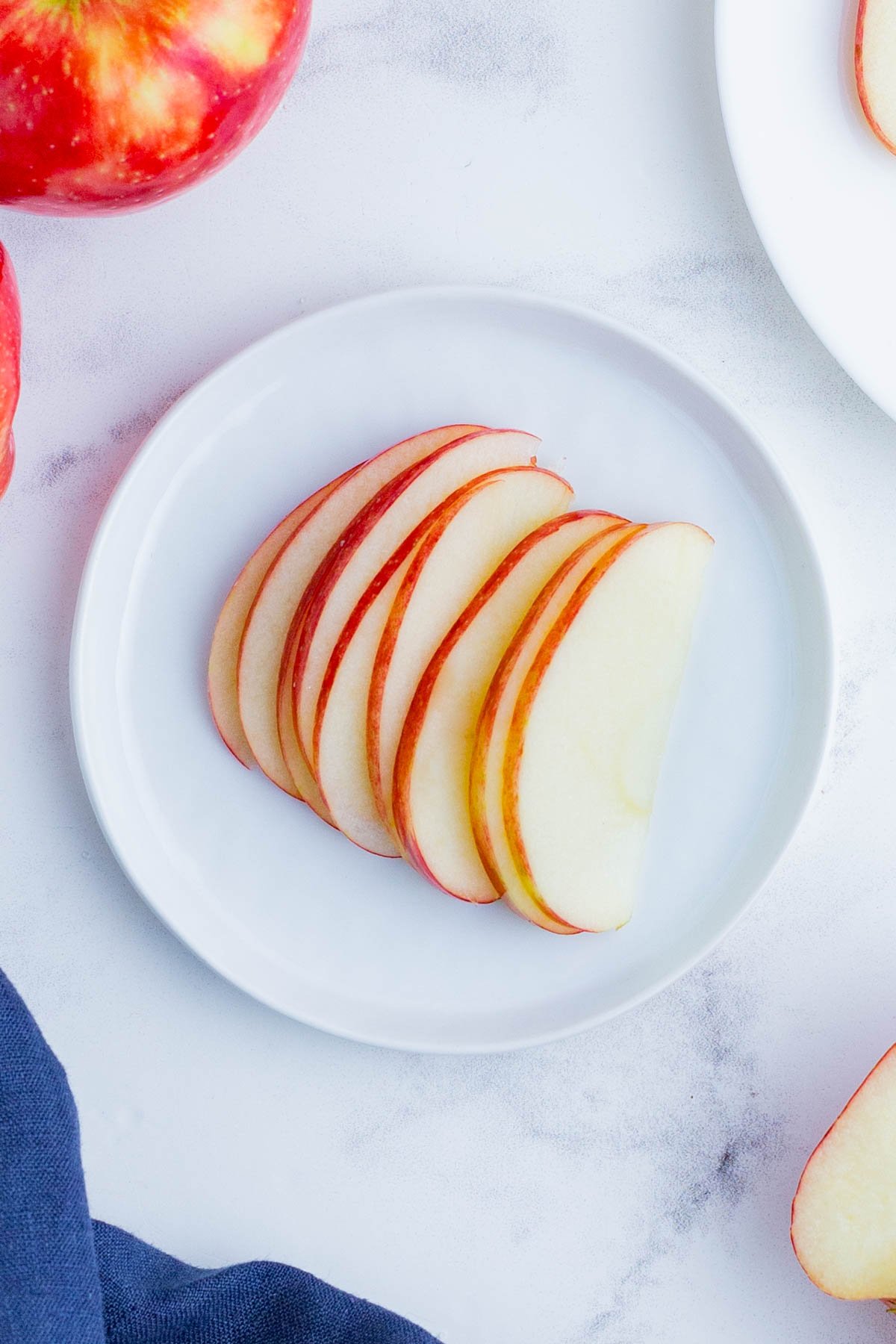
Water
If you really don’t have any of these other options available, there is still hope with just water! Whenever you cut into an apple, do the following:
- Fill a bowl with a few cups of water
- Take out slices when ready to eat!
This method, which simply reduces the slices’ exposure to oxygen through the barrier of water, is a great way to prevent browning. If your apples start to float to the top, seal the bowl with a lid to make sure they don’t touch any air. This method will also last a few hours!
Citric Acid Powder
If you find yourself always needing to preserve your cut apples, then citric acid powder might be a great purchase for you. Here’s what you’ll need to do:
- Place sliced apples on parchment paper
- Sprinkle citric acid powder using a sifter or spoon
- Flip over the apple slices and do the same on the other side
- Rub the apple slices to make sure every all the apple flesh is covered
- Place in a bag
- Rinse off once you’re ready to eat
This method doesn’t require you to soak your apples to preserve them. It’s a not-so-common method, but definitely an easy one!
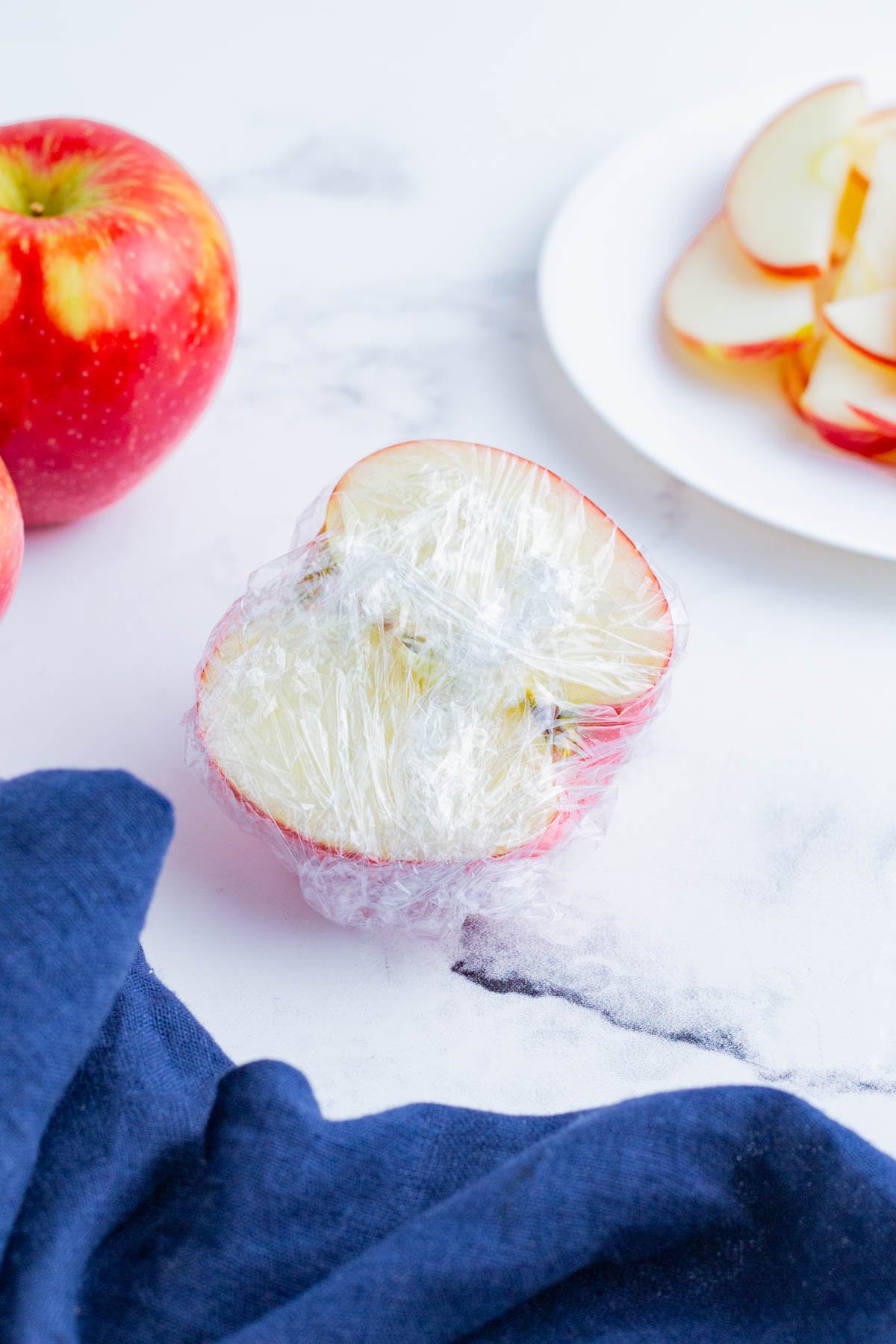
Plastic Wrap
If soaking apple slices isn’t your thing, then this method is for you! It’s simple, easy, and you definitely have plastic wrap on hand. All you have to do is wrap all apple slices tightly in plastic wrap.
This method will delay the browning process by a few hours. You can also combine this method with any of the 6 previous methods to preserve them even longer.
How to store apples?
Other than the above 7 methods, you can freeze apples to keep them fresher for longer without those brown spots. Use this method when you want to keep sliced or diced apples on hand for baking or smoothies:
- Peel your apples
- Slice them to desired size
- Soak them in 4 cups of water combined with 2 tablespoons of lemon juice for 5 minutes
- Drain the apples
- Arrange the apple slices on parchment paper on a cookie sheet
- Flash freeze for 10 hours
- Place them in a plastic freezer bag for up to one year
This is a great way to stock up on this favorite fruit for apple pies or fruit smoothies!
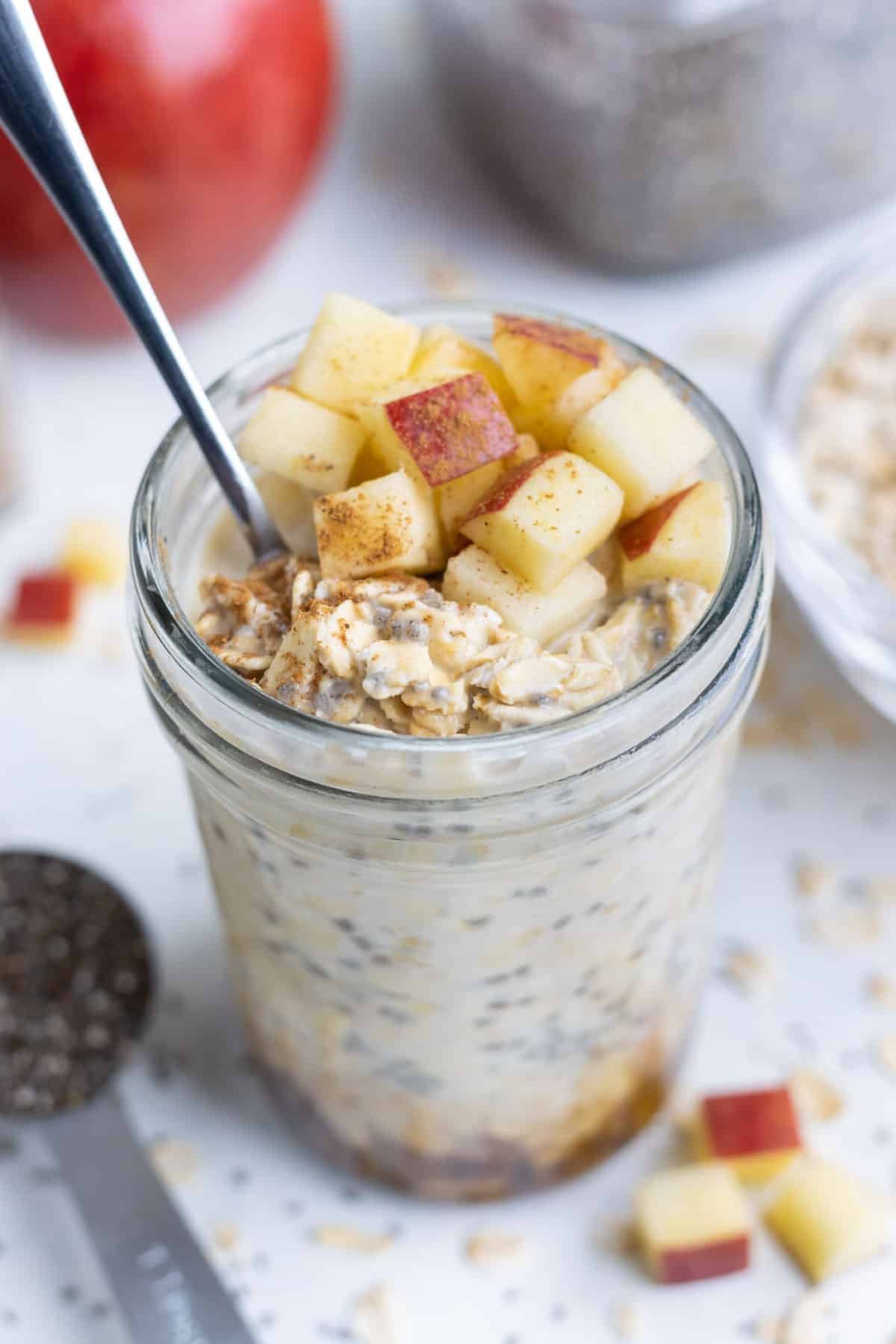
The Best Apple Recipes
Learn all things apples with post, 20+ Types of Apples (Common Varieties). Get your basic skills in order and learn How to Cut An Apple, then dive into some of these sweet and healthy recipes:


